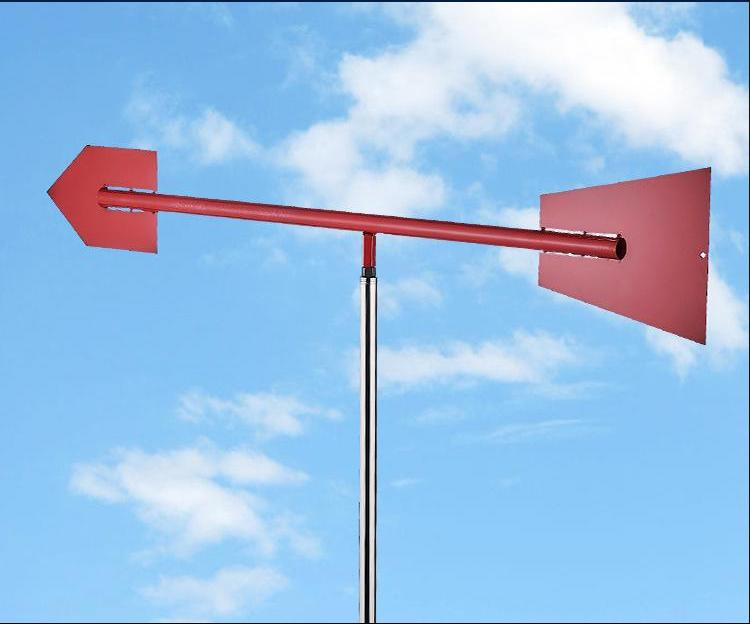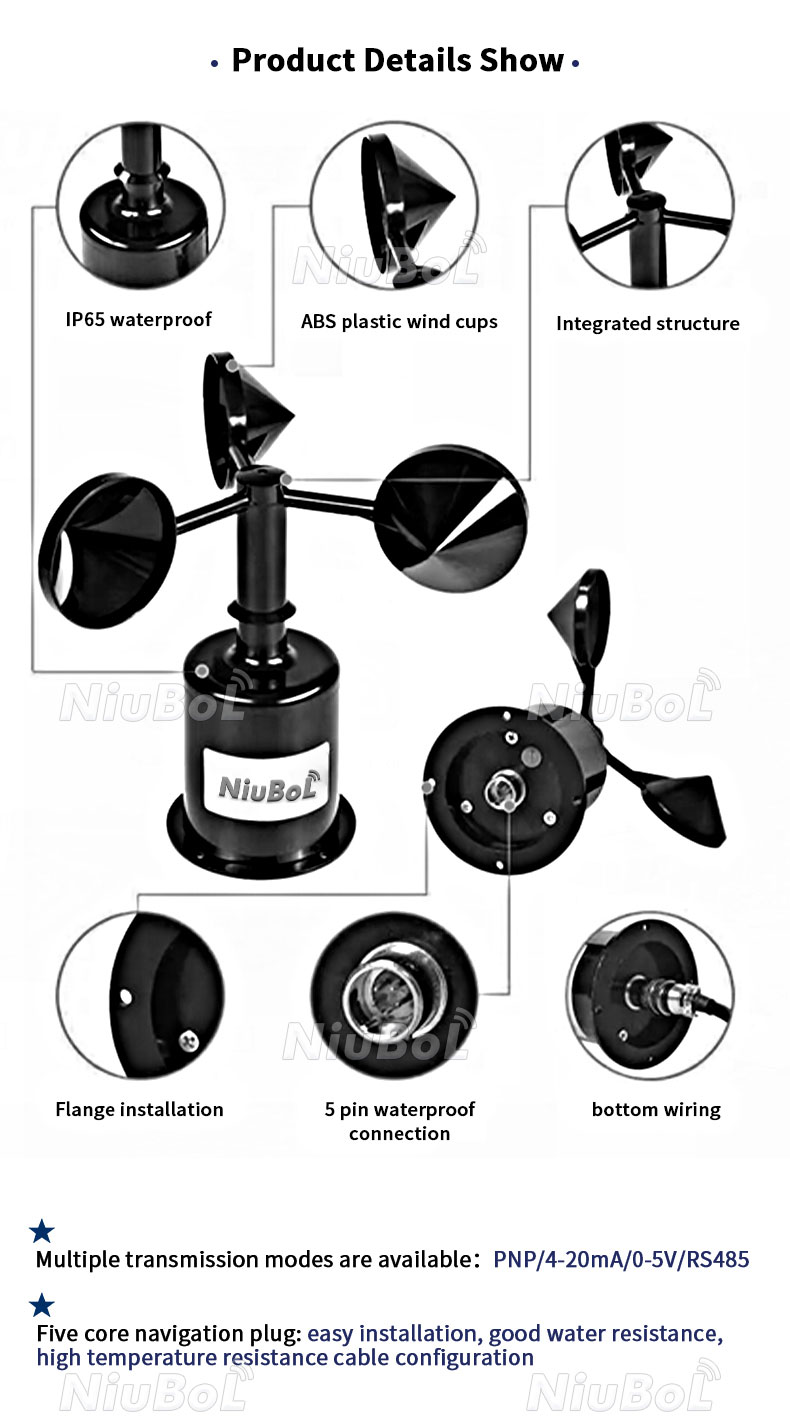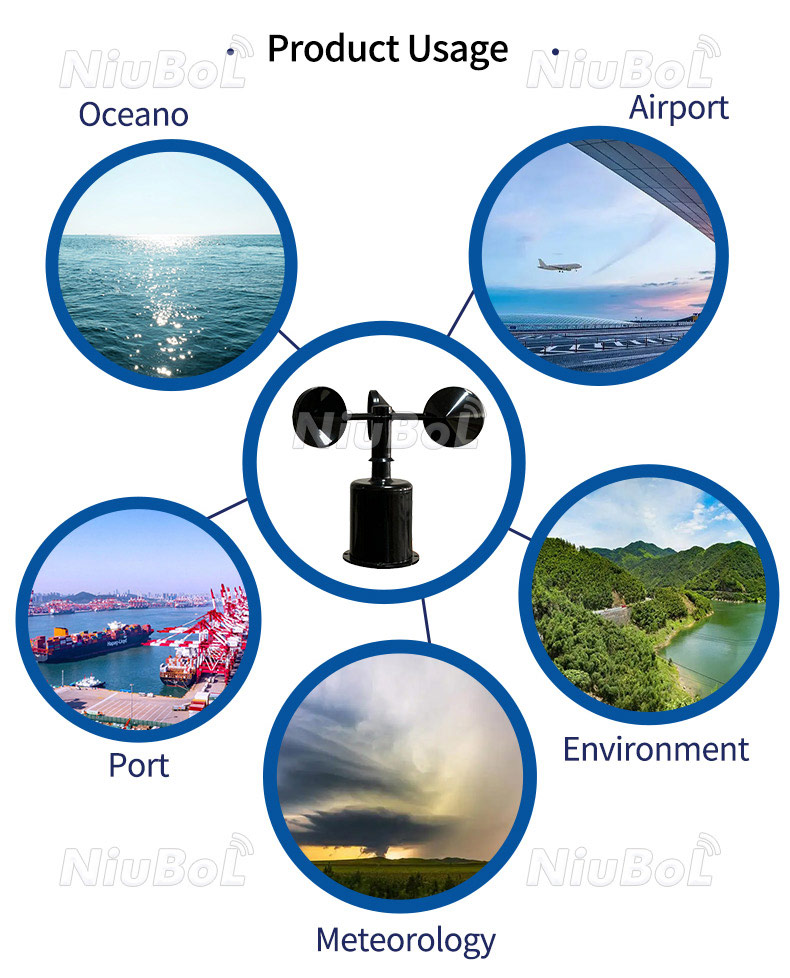

— Blogs —
—Products—
 Consumer hotline +8618073152920
Consumer hotline +8618073152920 WhatsApp:+8615367865107
Address:Room 102, District D, Houhu Industrial Park, Yuelu District, Changsha City, Hunan Province, China
Product knowledge
Time:2023-12-25 15:51:34 Popularity:8682
There are various instruments that measure wind speed, the most common of which is the anemometer. There are also many types of anemometers, including wind cup anemometers, wind vanes, and laser Doppler wind radars. All of these instruments can be used individually or in combination for meteorological observation and forecasting. In addition to meteorological observation, anemometers are also widely used in environmental protection, energy use, aerospace and other fields.
Anemometer: also known as anemometer or anemometer, used to measure the wind speed in air movement.
The wind cup anemometer is a commonly used wind measurement device, which mainly consists of three or four conical or hemispherical empty cups. When the wind blows, the cups rotate and their rotational speed is proportional to the wind speed. By measuring the rotational speed of the cups, the size of the wind speed can be deduced.
: Used to indicate the direction of the wind. A wind vane usually consists of a pole and a vector arrow that rotates with the direction of the wind.
Wind Rod: is an instrument that measures the direction and speed of the wind. It consists of a wind vane and an anemometer.
Laser Doppler Wind Radar: This is a high-tech wind measuring instrument that measures wind direction and speed by means of a laser beam.

Generally speaking, laser Doppler anemometry radar is a very accurate wind speed measuring instrument because it adopts a non-contact measurement method, avoiding sources of error such as friction and mechanical vibration, and at the same time, it is characterised by high accuracy and high sensitivity. However, this type of anemometer is also limited by its high cost and the need for professional operation and maintenance.
Apart from laser Doppler wind radar, other commonly used anemometers such as anemometers, wind vanes and wind poles also have their own accuracy and applicable scenarios. Therefore, when choosing an anemometer, it is necessary to select a suitable instrument according to the specific application requirements and scenarios to achieve the best measurement results.
In addition, there are also ultrasonic anemometers, hot-wire anemometers and so on. These anemometers can be used individually or in combination for meteorological observation and forecasting. They are widely used in meteorological observation, environmental protection, energy use, aerospace and other fields.

Wind energy resource assessment: Anemometers can be used to measure wind speed, wind direction, temperature, humidity, atmospheric pressure, solar radiation, rainfall and other elemental values, so as to assess the wind resources of wind farms and predict wind power generation. By measuring wind speed and wind direction at different heights, the size and distribution of wind energy can be calculated, providing important data support for the development and utilisation of wind energy resources.
Aeronautics: During the design and testing of an aircraft, it is necessary to accurately measure the speed and direction of the air flow in which the aircraft is located in order to assess the stability and safety of the flight. Anemometers can be used to measure flight-related aerodynamic loads and wind speeds to help improve aircraft design, as well as to test and optimise the performance of a wide range of aircraft, rockets and more.
Energy: Anemometers also have important applications in the energy sector. For example, in the use of solar energy, anemometers can be used to determine the positioning and attitude of mirrors or solar panels in a solar thermal power station to maximise the utilisation of solar energy.
Meteorological observation: Anemometers can be used for meteorological observation and forecasting by measuring meteorological parameters such as wind speed and direction to provide data support for weather forecasting and climate change studies.
Environmental monitoring: anemometers can be used to monitor the diffusion and transmission of air pollutants, so as to assess the extent and impact of environmental pollution, and to provide a scientific basis for the development and implementation of environmental policies.

Maintenance of anemometers is very important to ensure their accuracy and longevity. Here are some ways to maintain your anemometer:
Regular cleaning: the anemometer should be cleaned and disinfected regularly, especially the sensor part, to prevent dust, dirt, etc. from affecting the measurement accuracy.
Regular calibration: The anemometer should be calibrated regularly to ensure its accuracy. Calibration can be carried out by a professional organisation or personnel, or self-calibration can be carried out using standard equipment.
Avoid contact with corrosive substances: the sensor part of the anemometer should avoid contact with corrosive substances, such as acid, alkali, etc., in order to prevent damage to the sensor.
Avoid strong vibration: The anemometer should be protected from strong vibration or impact, which may affect its measurement accuracy or damage the internal structure.
Store in a dry place: The anemometer should be stored in a dry place to prevent moisture or damage.
Timely maintenance: If the anemometer has faults or problems, it should be maintained in time to avoid affecting its normal use. Through the above methods, you can effectively maintain the anemometer, extend its service life, and ensure its measurement accuracy.
In short, the anemometer is an important measuring instrument, which has a wide range of applications in many fields. Through the use of anemometers, people can better understand the wind energy resources and meteorological conditions, for energy use, aerospace, environmental protection and other areas of development to provide important data support.
Related recommendations
Sensors & Weather Stations Catalog
Agriculture Sensors and Weather Stations Catalog-NiuBoL.pdf
Weather Stations Catalog-NiuBoL.pdf
Related products
 Combined air temperature and relative humidity sensor
Combined air temperature and relative humidity sensor Soil Moisture Temperature sensor for irrigation
Soil Moisture Temperature sensor for irrigation Soil pH sensor RS485 soil Testing instrument soil ph meter for agriculture
Soil pH sensor RS485 soil Testing instrument soil ph meter for agriculture Wind Speed sensor Output Modbus/RS485/Analog/0-5V/4-20mA
Wind Speed sensor Output Modbus/RS485/Analog/0-5V/4-20mA Tipping bucket rain gauge for weather monitoring auto rainfall sensor RS485/Outdoor/stainless steel
Tipping bucket rain gauge for weather monitoring auto rainfall sensor RS485/Outdoor/stainless steel Pyranometer Solar Radiation Sensor 4-20mA/RS485
Pyranometer Solar Radiation Sensor 4-20mA/RS485
Screenshot, WhatsApp to identify the QR code
WhatsApp number:+8615367865107
(Click on WhatsApp to copy and add friends)
